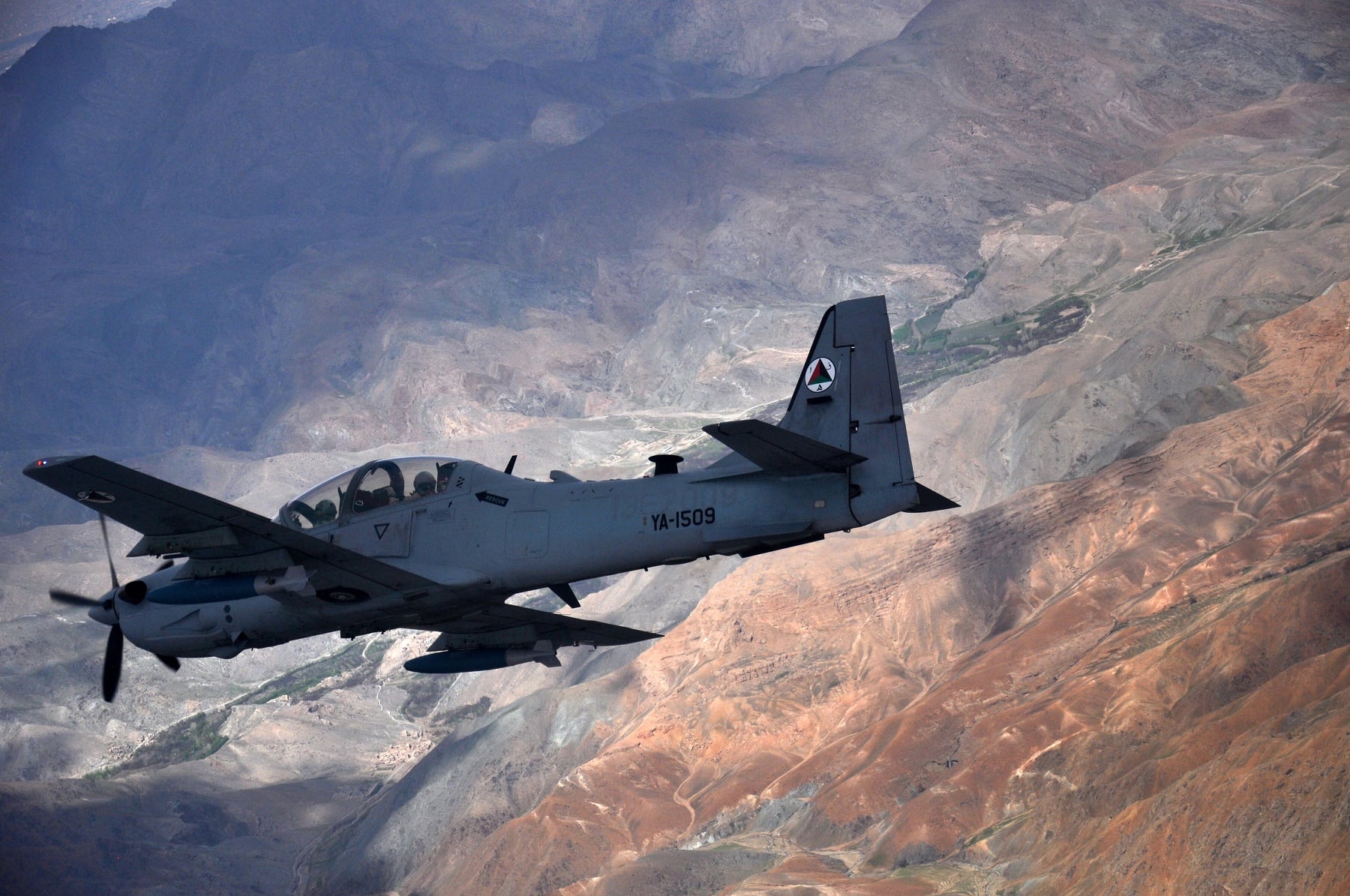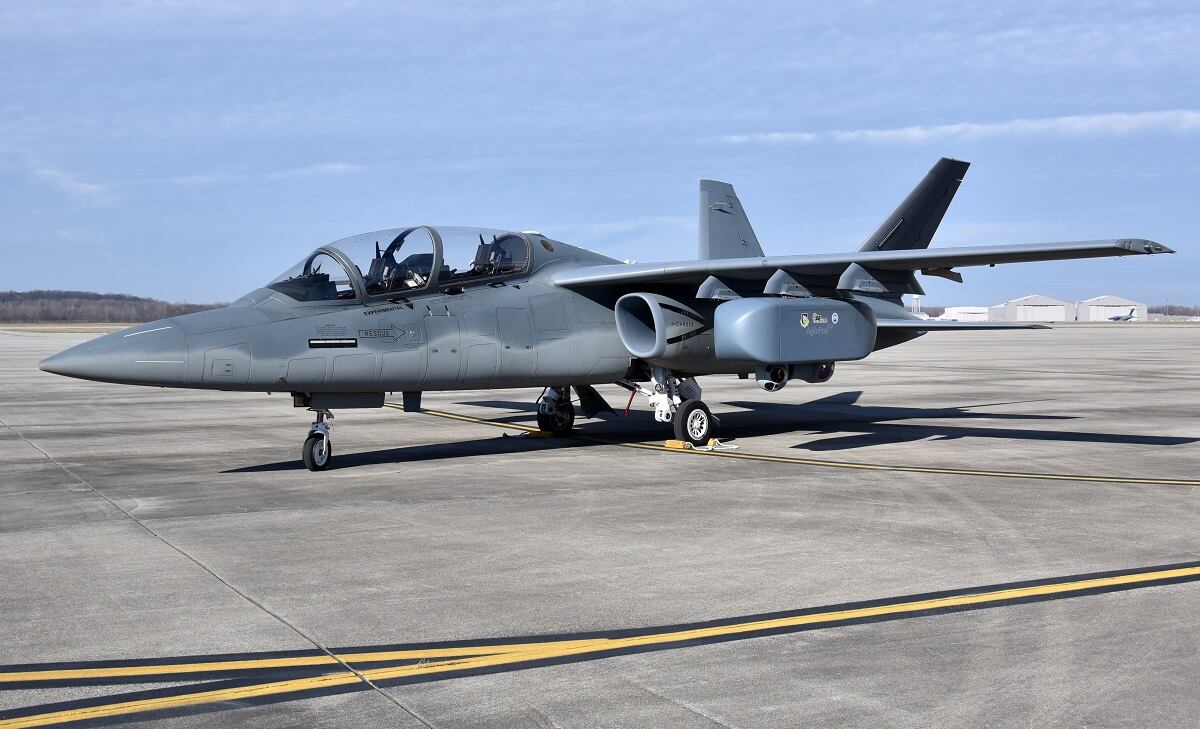WASHINGTON — As the Air Force contemplates whether to buy a new fleet of light attack aircraft, a duo of former Air Force officers are pressing for an even wider revival of the attack aircraft inventory that could include a light reconnaissance plane or even a purpose-built replacement to the A-10 Warthog.
Fielding a light attack aircraft, or OA-X, should only be the Air Force’s first step, wrote retired Lt. Col. Michael Buck and retired Maj. Gen. Lawrence Stutzriem, both of the Mitchell Institute for Aerospace Studies, in a paper on light combat aircraft released May 18.
The service could also benefit from pursuing follow-on aircraft that could fill roles that continue to be in high demand by Central Command, such as a light ISR aircraft or R/A-X; a replacement to the venerable A-10 Warthog close air support plane or A/X-2; or an attack version of the future T-X training jet called A/T-X.
“If we develop a long-term program of continuous development, this I think will pay off in spades, with the revitalization of the attack enterprise that allows the fourth and fifth-gen high-end assets to work more on near-peer threats,” Buck said during a Friday roll out of the paper.
Embarking on an attack aircraft renaissance would be a huge change for the Air Force, which has largely backed away from attack plane procurement in the last 35 years.
RELATED

During the Vietnam War, the United States built up a fleet of attack aircraft, which it largely maintained into the 1980s even as numbers of bombers and fighter jets decreased, wrote Mike Benitez, an Air Force major, in a 2017 essay for War on the Rocks.
That all changed when the Cold War and the Gulf Wars ended. In 1991, the Air Force retired the A-7 and A-37 and cut its A-10 Warthog inventory, leaving the remaining Warthogs as the only purpose-built attack planes left in the service.
However, there are signs that the Air Force could warm to the idea of building the attack aircraft inventory back up.
Jim Dunn, Air Combat Command’s deputy director of plans, programs and requirements, stressed on Friday that the service is focused on the light attack experiment, and that there are currently no plans to proceed with future demonstrations of a light ISR plane or the other concepts floated by Buck and Stutzriem.
“But a good idea is a good idea, and [ACC commander] General [Mike] Holmes clearly supports the idea of moving forward with light attack; he’s been on the record [that] there’s also interest in a light ISR platform that’s out there,” Dunn said during the rollout.
“So I don’t think there’s anything that’s off the table — we will continue to look at [it]. But right now we have no programs of record that are doing this.”
Holmes first pitched the idea of testing a light ISR plane last year, but so far the Air Force has not moved forward with the concept.
Buck envisions a light ISR aircraft, or R/A-X, as a “somewhat developmental” plane exemplified by the Scorpion jet produced by Textron. He pointed to Scorpion’s fuel efficiency, speed and large payload bay as key characteristics for an R/A-X.

An R/A-X will help the Air Force satisfy its reconnaissance requirements — currently only 30 percent of combatant commander demands for ISR are being met — and “give us the ability to scale our intelligence, surveillance and reconnaissance as necessary,” Buck said.
“And if we can get to this in four to five years and produce them in sufficient quantities, and continue along the model of continuous improvement and development, particularly with open mission systems architecture allowing rapid upgrades and responsive changes to avionics capabilities, that would be greatly beneficial.”
The service could also modify its future training jet, the T-X, and use it as a future attack plane called A/T-X, Buck said. The Air Force is set to select a T-X design this summer from a pool of competitors that include a Lockheed Martin-Korea Aerospace Industries team, a Boeing-Saab team and Leonardo.
And eventually, when the Air Force gets ready to sunset the A-10, it can field a direct replacement or A/X-2, he said.
One of the competitors in the light attack experiment has already pushed back on the idea that multiple lines of effort need to exist.
Taco Gilbert, Sierra Nevada Corp.’s vice president of integrated tactical solutions, was asked about the light ISR opportunity during a phone call Monday with reporters. Sierra Nevada Corp and Embraer are currently engaged in the light attack experiment with the A-29 Super Tucano.
“You don’t have to add [ISR], it’s inherent in the [A-29] platform,” he said. “The aircraft will accept any 15-inch sensor that is out there, and certainly we have swapped sensors around between experiments and different customers, tailoring whenever it is required. … Certainly, that points to another mission set that the aircraft has.”
Valerie Insinna is Defense News' air warfare reporter. She previously worked the Navy/congressional beats for Defense Daily, which followed almost three years as a staff writer for National Defense Magazine. Prior to that, she worked as an editorial assistant for the Tokyo Shimbun’s Washington bureau.





